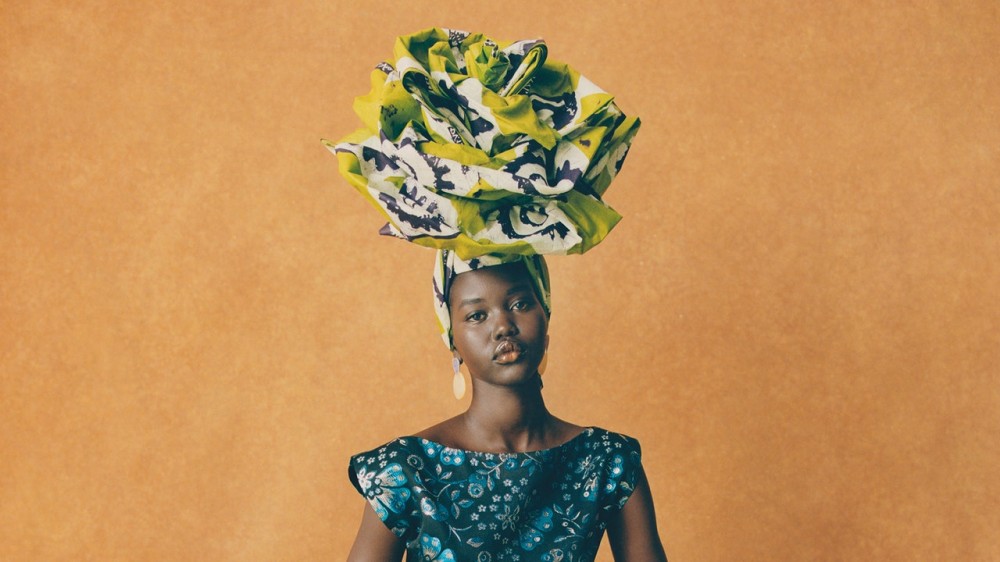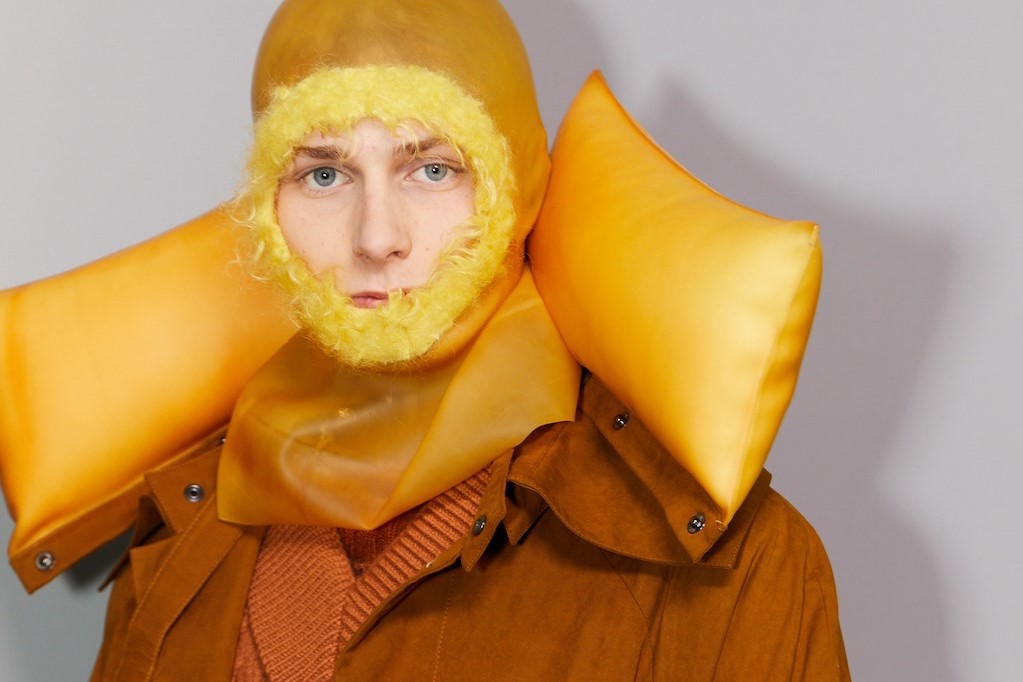
Family Values: An Ode to Aunties and Their Inimitable Sense of Style
WHEN I WAS A KID in my Alabama hometown, every year brought the same parties in our Nigerian-American community: the Fourth of July cookout in the park; the Christmas throwdown in the hotel banquet hall, where my family and our friends wore our finest traditional clothing, a sea of blinding-bright textures and elaborate head ties, called geles, that stretched toward the ceiling. During those holiday parties, as Fela Kuti and King Sunny Adé played from the speakers, I inevitably ended up staring at my mother’s girlfriends, other married (but sometimes divorced or single) women, as they floated around the hall, eating, talking, laughing. Their hair and makeup were exquisitely done, with big curls and updos, red lipstick, and vivid eye shadow; their outfits, planned weeks in advance, melded glamour and comfort so they could sweep you up into their folds of crinkly, glittering fabric as they danced; and their jewelry, usually gold or coral, was dramatic. Their shoes and purses matched, obviously. Their swagger seemed both over-the-top and effortless.
I was never exactly sure how to define my relationship to those women in my mom’s life. My mom’s sisters were naturally my aunts, beloved by my brothers and me. But her friends were also a constant part of the background—in our home, at gatherings at the houses of my parents’ friends, and at important moments like birthdays and graduations—and though they weren’t relatives, my mom instructed me to refer to all of them as “Auntie” anyway. The women were not my “age-mate,” as Nigerians like to say, not people I could treat like my school and neighborhood friends, and over time, they became like family. They flooded me with love and praise—and they disciplined me, shouting my name as a warning when I got out of line or ran around like a heathen. (In fact, sometimes I wanted to shout back that they were not my mom.)
But along with my mom, my aunties were visions of what life could look like when I eventually decided who I would be—a panorama of Black womanhood that included professionals, stay-at-home mothers, and the flyest “spinsters” I had ever seen. And by virtue of the ease they had in their bodies, my aunties radiated an attitude of feeling good about yourself, especially the healthier and curvier you were, that predated the idea of body positivity. The lack of distinction between my “real” aunts and my aunties was even more acute when my family visited Nigeria. There, every woman over the age of 25 in our social circles took it upon herself to act as my surrogate older sister, including one who saw no problem with reading my then-confidential diary. (There are few boundaries with aunties.) Aunties, I would later come to find out, are common not just among people I know from African communities but also Caribbean, South Asian, and Black American ones. In these fashion images, styled by Gabriella Karefa-Johnson and shot by Nadine Ijewere, it’s striking how the contemporary models are no more bold than the women in the archival photos curated here by researcher and archivist Daniel Obaweya. Their clothes are a cacophony of mismatched prints in brilliant shades that convey both confidence and the pleasure they take in their appearance. They see themselves clearly—and will make you see them, too.
Aunties had a singular role in my Alabama community: Whether or not they had children, they were maternal figures to the young people around—only a phone call away with advice and gossip, and able to step in if our parents were overwhelmed with work or personal crises. My experience in Nigeria, and across the African continent, is that as people grow older, contrary to the American obsession with youth, they gain more admiration and respect for their experience and wisdom. (When I was a child, my parents made sure I always appropriately greeted the older people in the room.) It is rarely heard of to put aging relatives in senior homes; instead, they often move in with their families until they pass on. And so older aunties are figures of authority, and they helped to make decisions for our local association of African families. They are indispensable. I remember one of my aunties both emceeing our annual holiday party—with a mic in one hand and the train of her skirt in another as she told embarrassing but entertaining jokes—and sitting in my family’s living room consoling my parents after one of my grandmothers had died.
WHILE THE IDEA OF AUNTIES has long been consigned to a specific part of the lives of people like myself, who belong to two cultures, and has not often been reflected in American popular culture, Generation Z is changing that. On TikTok, auntie videos are everywhere: from one about how African aunties can sweetly and passive-aggressively question you about your (unacceptable) choice of outfit—and when you are finally getting married—that made me laugh out loud, to another about nosy Indian aunties who promise to be discreet with your secrets but end up telling every single person they know. Aunties seem to be on their way to becoming a phenomenon; the delightful actress Tracee Ellis Ross is now Instagram’s favorite one.
Researcher and archivist Daniel Obaweya—also the steward of @nigeriangothic on Instagram, a tribute to Black pop-cultural history—compiled these images, including work by Chief Solomon Osagie Alonge (left) and another image by Joseph Chila (below, left), both of whom lived and worked in Africa, to hint at the depth and breadth of auntie style. His sources range from 1960s-era historical archives to Tumblr, and showcase both traditional styles of African and Caribbean dress and the evidence of African-American influence.
Auntie style is mostly ephemeral—an unbothered mood, but still recognizable. It can look like a middle-aged woman on the street, flamboyantly put together, cradling a phone to her ear, balancing shopping and grocery bags and herding her kids home while speaking Yoruba and English to her caller and her children at the same time. It can also look like a 20-something student in a slouchy dashiki dress and big glasses giving no-nonsense romantic advice to her friends. If what a woman wears influences how she feels, the aunties I know aspire to be deliriously joyful. The women in this collage all have an elegance regardless of their age. “It’s the way they carry themselves. You can rock auntie style at 18, you can rock auntie style at 50—it doesn’t matter,” Obaweya says. Now in my 30s, I still aim for the flair of my favorite aunties when I pick clothes, move through the world, and reflect on how I feel about myself. So much about having aunties is the emotional experience of always feeling looked after—through moves to foreign countries, breakups, and job changes. It’s an experience I want to give another little girl one day, too.



